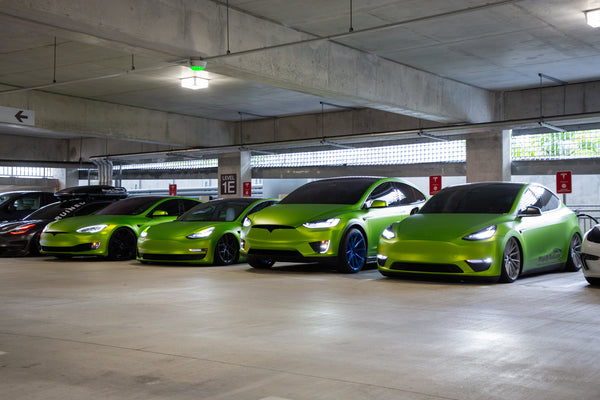Raw Materials: How Tesla is reducing lithium-ion battery costs for competitive advantage [Infographic]
The oil industry is beginning to receive some serious warnings about the threat of electric vehicles. And, as reported by (none other than) Oil Price: "Very soon, the internal combustion engines we’ve been accustomed to for over 100 years, may be replaced. The lithium-ion battery is becoming increasingly cheaper to manufacture making it near competitive with our more familiar [internal combustion] engine design. The cost of lithium-ion batteries has decreased 65 percent since 2010, back when they cost over $1,000 per kilowatt-hour. These batteries now cost under $350 and some companies are finding ways to produce them for even less."
Instagram: carsof_newyork
And one of those companies is Tesla Motors [NASDAQ: TSLA]. In fact, "Many predict that lithium-ion batteries will be cost competitive with internal combustion engines once the new age batteries are as cheap as $100 per kilowatt-hour, a plausible figure for 2020. RW Baird estimates Tesla pays significantly less than the rest of the market for their batteries, somewhere between $150-200 per KWh. Companies that can manufacture lithium-ion batteries at this discounted level have a competitive advantage over others."
Instagram: james.h0
So how are lithium-ion battery prices dropping so low? "The reduction in prices for lithium batteries is partially due to the access and substitution of raw materials vital to production." So what are the raw materials that make up lithium-ion batteries? For that, Visual Capitalist* reports, "on the innards of lithium-ion batteries as they are expected to make up the vast majority of the total rechargeable battery market for the near future. Each lithium-ion cell contains three major parts" as noted below:
- 1) Anode (natural or synthetic graphite)
- 2) Electrolyte (lithium salts)
- 3) Cathode (differing formulations)
And, "While the anode and electrolytes are pretty straightforward as far as lithium-ion technology goes, it is the cathode where most developments are being made. Lithium isn’t the only metal that goes into the cathode – other metals like cobalt, manganese, aluminum, and nickel are also used in different formulations. Here’s four cathode chemistries, the metal proportions (excluding lithium), and an example of what they are used for" in a Tesla Model S, Apple iPhone, Nissan Leaf, and Tesla Powerwall...
Above: Visual Capiltalist*
How can we learn more about these raw materials in order to have additional context about the batteries that power electric vehicles like those from Tesla Motors? As an example, consider this: "Goldman Sachs estimates that a Tesla Model S with a 70kWh battery uses 63 kilograms of lithium carbonate equivalent (LCE) – more than the amount of lithium in 10,000 cell phones." For more, check out the infographic below (simply click the red button below to enlarge the infographic)...
===
*Source: Visual Capiltalist




